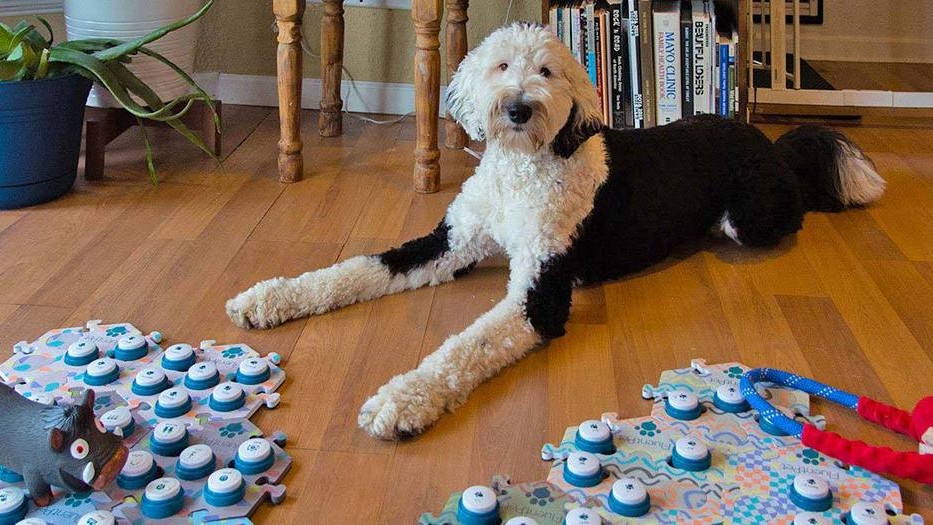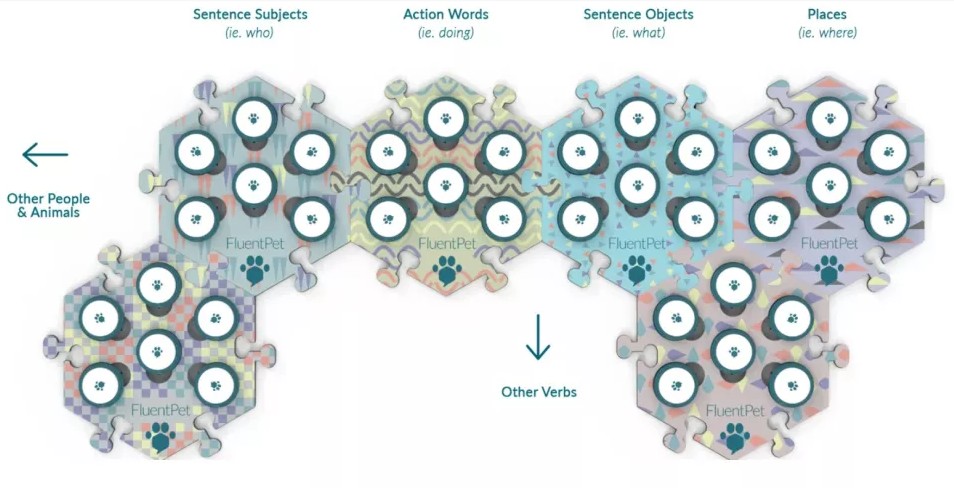
One of the best parts of the 2009 Disney movie Up was the special collar that allowed Dug the dog to talk to his owners. Now a new system called FluentPet is giving canines in the real world a similar ability.
FluentPet uses a system of buttons to give pets a "voice". The buttons are placed in into differently coloured hexagonal tiles, which group together different kinds of words, such as action words, sentence objects, adjectives and places.
The dog presses these buttons to communicate with their owner in phrases of up to four words. The owners also press the buttons to "answer back" to the dog's statements.

It might sound like a silly parlour trick, like the way a chatbot fools you into thinking they're a real person. But the founders of the startup all have PhDs in the cognitive sciences and say their system is based on serious cognitive and behavioral science techniques.
Central to the project is seeing how owners and pets are using the device in practice, and the company is encouraging purchasers to share their interactions on social media. As Leo Trottier told Design Week, “When no one has the exact answer, you have to kind of just see what works – in this way, we like to think of it as a virtuous cycle between product design, science and research.”
The most popular so far has been TikTok user @whataboutbunny, aka Alexis Devine, who's sheepadoodle Bunny is now familiar with 92 words.
@whataboutbunny This is how playdates are made ##dogplay ##communication ##dogtok ##bestie ##foryou
♬ original sound - I am Bunny
"It's really important that you know how to communicate with your dog on their terms first," she advises. "Don't just jump into the buttons and expect excellent communication. Be sure that you're taking the time to understand your dog's body language [...] Learn to communicate on their level first."
Get the Creative Bloq Newsletter
Daily design news, reviews, how-tos and more, as picked by the editors.
She adds that you shouldn't include a 'treat' or 'eat' button at first, as it can be overstimulating for them.
Is it really talking?
So is this really talking? Well, it certainly looks like talking and sounds like talking.
Then again, so does chatting with Alexa, and no one's arguing that your smart speaker is actually sentient. So is a dog pressing a series of buttons really a "conversation", or just them solving a puzzle that gets them what they want?
Ultimately, no one can say: we can't see into a dog's mind. But we'd also posit that as long a system like this helps people communicate with their pets better, and make them feel like they're having a conversation, does it truly matter?
If you want to give it FluentPet a try, you can get started here.

Thank you for reading 5 articles this month* Join now for unlimited access
Enjoy your first month for just £1 / $1 / €1
*Read 5 free articles per month without a subscription

Join now for unlimited access
Try first month for just £1 / $1 / €1

Tom May is an award-winning journalist and editor specialising in design, photography and technology. Author of the Amazon #1 bestseller Great TED Talks: Creativity, published by Pavilion Books, Tom was previously editor of Professional Photography magazine, associate editor at Creative Bloq, and deputy editor at net magazine. Today, he is a regular contributor to Creative Bloq and its sister sites Digital Camera World, T3.com and Tech Radar. He also writes for Creative Boom and works on content marketing projects.
